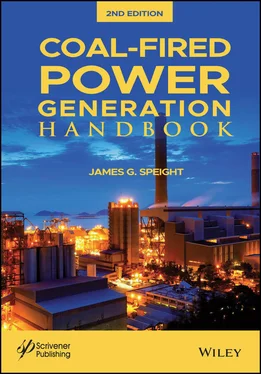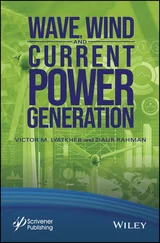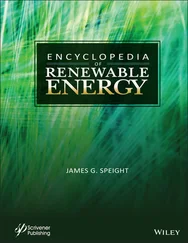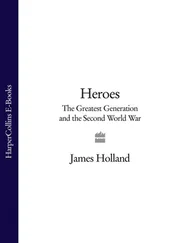Currently, mine closure is a rigorously regulated process requiring detailed technical and financial analysis during the planning and operation stages for a mine – and ensuring financial and legal responsibility for post-mining closure. There is the continued need to mitigate the effects of past mining practices and to demonstrate more effective and sustainable solutions to the problems of acid mine drainage, mine fires, and the utilization of waste piles from abandoned mine land sites (NRC, 2007).
As-mined coal ( run-of-mine coal ) contains a mixture of different size fractions, sometimes together with unwanted impurities such as rock and dirt ( Table 3.1). The purpose of coal preparation (often referred to as ( coal cleaning, coal beneficiation ) is to improve the quality of coal by cleaning to remove inorganic impurities and sizing for handling, process, and combustion requirements.
Thus, another sequence of events is necessary to make the coal a consistent quality and salable. Such events are called coal cleaning . Preparation of coal prior to feeding into the boiler is an important step for achieving good combustion. Large and irregular lumps of coal may cause the following problems: (i) poor combustion conditions and inadequate furnace temperature, (ii) higher excess air resulting in higher stack loss, (iii) increase of unburned carbonaceous material in the ash, and (iv) low thermal efficiency. Thus, effective preparation of coal prior to combustion improves the homogeneity of coal supplied, reduces transport costs, improves the utilization efficiency, produces less ash for disposal at the power plant, and may reduce the emissions of oxides of sulfur.
The relative density, friability, hardness, and strength of different elements within the coal matrix are key parameters for mechanical cleaning processes. The specific gravity of coal ranges from 1.23 to 1.72, depending on rank, moisture, and ash content. Mineral impurities have higher densities and this property is employed by a variety of separation methodologies. A coal preparation plant typically contains different circuits delineated by particle size. The larger particle fraction from 6 to 18 mm will normally contain coarse rock that can be separated by a vibrating jig or dense medium bath. For the smallest particles, those that are <0.5 mm, froth flotation is used. In this process, a conditioned feed pulp is introduced onto the top of the froth bed. Hydrophobic coal particles attach to rising bubbles and stay in the froth while hydrophilic mineral particles pass through it and discharge at the bottom of the floatation cell. Cyclones are used and the lighter coal particles swirl upward to a clean coal discharge while higher density impurities sink to the funnel outlet. Various dewatering screens, thickeners, and filters are used to separate the product and recover the medium.
Table 3.1 Added value to coal through processing (cleaning).
| Method |
Comment |
| Mineral matter |
Removal of the mineral matter, which is largely noncombustible and may constitute up to 65% w/w of the raw coal, increases the heating value of the coal on a per unit mass basis. Some combustible material may be lost as part of the cleaning process but the removal of unwanted material reduces the mass and volume of coal for a given heating value thereby reducing shipping costs as well as minimizing coal handling and ash management costs for the end user. |
| Processing |
Principally mineral matter removal and drying to remove moisture allows greater control over the quality of the coal, which improves the consistency of the coal for the end user, such as an electricity generator or coke manufacturer. Improved and consistent quality of the coal increases the efficiency and availability of steam boilers and is particularly important for the quality of metallurgical coke. |
| Physical processing |
Physical processing methods can, to some extent, reduce sulfur and trace element contents, particularly on a heating value basis. Typically, coal cleaning is not practiced primarily for this purpose except for the metallurgical coal market. |
Coal preparation is the stage in coal production when the run-of-mine coal is processed into a range of clean, graded, and uniform coal products suitable for the commercial market. In some cases, the run-of-mine coal is of such quality that it meets the user specification without the need for beneficiation, in which case the coal would merely be crushed and screened to deliver the specified product. The decision whether or not to process a particular raw coal depends on the coal and its intended market. The subbituminous coal of the Powder River Basin (Wyoming) is almost always shipped to market raw because it has inherently low mineral matter content (low ash-producing propensity) and poor washability. The region has low water availability, which is a critical requirement for conventional coal beneficiation.
By way of definition, the term washability is used to describe the ease with which mineral matter can be separated from the coal, and depends on the degree of incorporation of the mineral matter in the organic matrix of the coal and its specific gravity relative to the coal.
The purpose of coal preparation is to improve the quality of coal by cleaning to remove inorganic impurities and sizing for handling, process, and combustion requirements (Skea and Rubin, 1988; Speight, 2013). The relative density, friability, hardness, and strength of different elements within the coal matrix are key parameters for mechanical cleaning processes. The specific gravity of coal ranges from 1.23 to 1.72, depending on rank, moisture, and mineral matter content. Mineral impurities have higher densities and this property is employed by a variety of separation methodologies.
A coal preparation plant typically contains different circuits delineated by particle size. The larger particle fraction from 6 to 18 mm will normally contain coarse rock that can be separated by a vibrating jig or dense medium bath. For the smallest particles, those that are <0.5 mm, froth flotation is used. In this process, a conditioned feed pulp is introduced onto the top of the froth bed. Hydrophobic coal particles attach to rising bubbles and stay in the froth while hydrophilic mineral particles pass through it and discharge at the bottom of the floatation cell. Cyclones are used and the lighter coal particles swirl upward to a clean coal discharge while higher density impurities sink to the funnel outlet. Various dewatering screens, thickeners, and filters are used to separate the product and recover the medium.
The output from any coal mine usually consists of raw coal (run-of-mine coal, ROM coal) that is wetter and finer, and also contains more impurities than in the past due to (i) mining of lower quality coals, (ii) advanced, continuous and non-selective mining techniques that cause more coal being broke up, and (iii) more impurities being included, and (iv) extensive water utilization for minimizing dust (Lockhart, 1984). While the quality of run-of-mine (ROM) coals is generally decreasing, the necessity for efficient coal beneficiation technology is significantly increasing, resulting in an increased demand for high-quality coals that meet both market and environmental standards.
Thus, the coal delivered to the coal preparation plant consists of coal, rocks, minerals, and any other form of material that is not coal. The coal also varies widely in size, ash content, moisture content, and sulfur content. Thus, coal preparation serves several purposes. One important purpose is to increase the heating value of the coal by mechanical removal of impurities. This is often required in order to find a market for the product. Run-of-mine coal from a modern mine may incorporate as much as 60% reject materials.
Читать дальше












